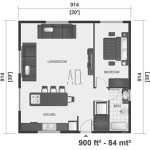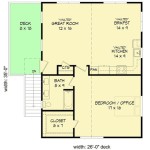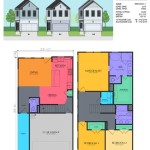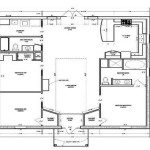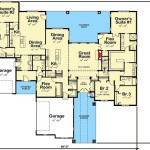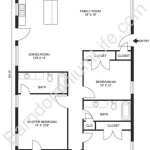A-Frame Home Floor Plans: A Comprehensive Guide to Unique and Efficient Living Spaces
A-frame homes have captivated homeowners for decades with their striking architectural design and cozy, inviting interiors. These iconic structures, characterized by their sloping roofs that meet at a central ridgeline, offer a unique blend of aesthetics and functionality that continues to appeal to modern homeowners.
Whether you're planning to build your dream home or simply curious about the possibilities of A-frame architecture, understanding the different floor plans available is crucial. This comprehensive guide will provide an in-depth exploration of A-frame home floor plans, discussing their advantages, disadvantages, and the key design elements that make them special.
Advantages and Disadvantages of A-Frame Home Floor Plans
Advantages:
- Dramatic Aesthetics: A-frame homes possess a remarkable visual appeal, with their steep roofs and triangular shape creating a distinctive and eye-catching silhouette.
- Efficient Space Utilization: The A-frame design allows for maximum space utilization, as the sloping roofs eliminate the need for traditional walls, creating open and airy living areas.
- Natural Light and Ventilation: Large windows and skylights, often incorporated into A-frame designs, maximize natural light and ventilation, creating a bright and inviting atmosphere.
Disadvantages:
- Limited Storage Space: The sloping walls and lack of traditional closets can present challenges for storage, requiring creative storage solutions.
- Potential for Heat Loss: The large surface area of the roof can lead to heat loss, requiring careful attention to insulation and energy efficiency.
- Structural Considerations: The unique roof design requires specialized engineering and construction methods compared to traditional homes.
Key Design Elements of A-Frame Home Floor Plans
Sloping Roof: The defining feature of an A-frame home is its steeply pitched roof, which typically extends to the ground on all sides.
Open Floor Plan: A-frame homes often embrace open floor plans, with the living, dining, and kitchen areas seamlessly flowing into one another, creating a spacious and inviting living environment.
Loft Space: Many A-frame homes incorporate a loft space, accessed by a ladder or staircase, which can be used as a bedroom, office, or additional living area.
Natural Lighting: A-frame homes typically feature large windows and skylights throughout, allowing natural light to penetrate deep into the interiors.
Common A-Frame Home Floor Plans
Single-Story A-Frame: This classic design features a single level, with a central living space and bedrooms and bathrooms situated along the sides.
Two-Story A-Frame: Adding a second story creates additional living space, with the upper level typically housing bedrooms and bathrooms.
Split-Level A-Frame: Split-level A-frame homes offer a unique layout, with different living areas located at varying elevations within the sloping roof structure.
Multiple A-Frame Structures: Some designs incorporate multiple A-frame structures connected by a central core, creating a more complex and spacious floor plan.
Ultimately, the choice of A-frame home floor plan depends on personal preferences, lifestyle, and budget. By understanding the advantages, disadvantages, and key design elements, homeowners can make informed decisions that lead to a unique and functional living space that reflects their individual needs.

A Frame Cottage Plans For Guest House Temp Cabin Plan

A Frame House Plans Free Cabin Floor

Plan 43048 A Frame Style With 3 Bed 2 Bath

A Frame House Plans Everything You Need To Know Field Mag

A Frame Style Plans Vacation Type House
A Frame Home Plan 3 Bedrms 2 Baths 2054 Sq Ft 137 1205

Cozy Winter Cabins A Frame House Plans And More Houseplans Blog Com
A Frame Home Plan 1 Bedrms Baths 810 Sq Ft 137 1744

A Frame Cabin Plan Boulder Mountain

1500 Square Foot A Frame House Plan With Home Theater Wet Bar 35068gh Architectural Designs Plans



